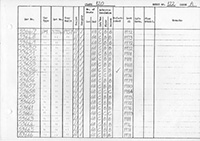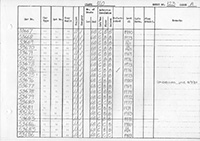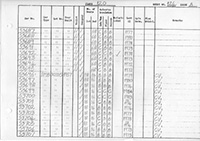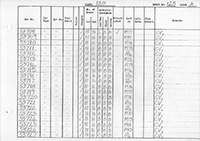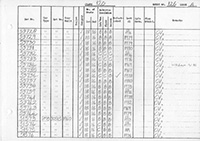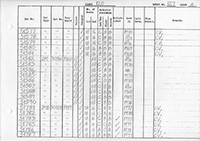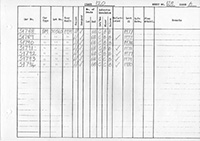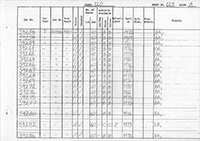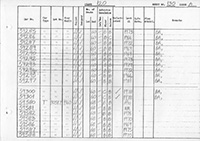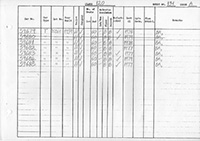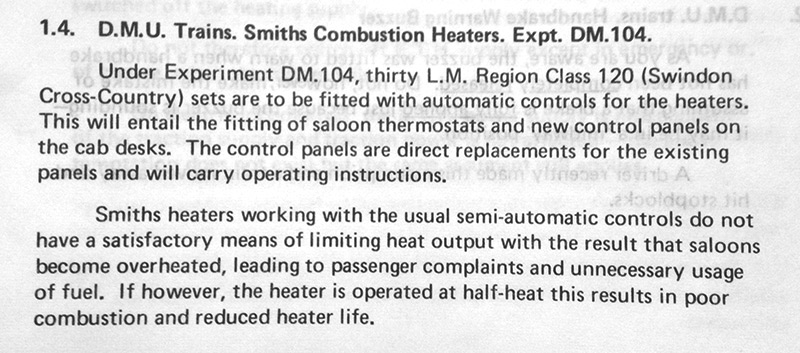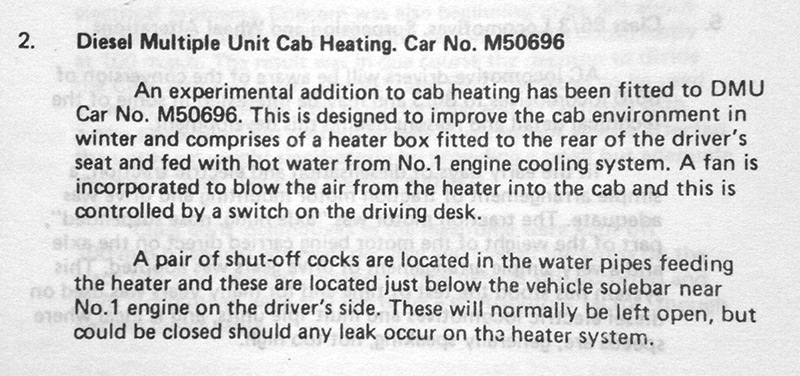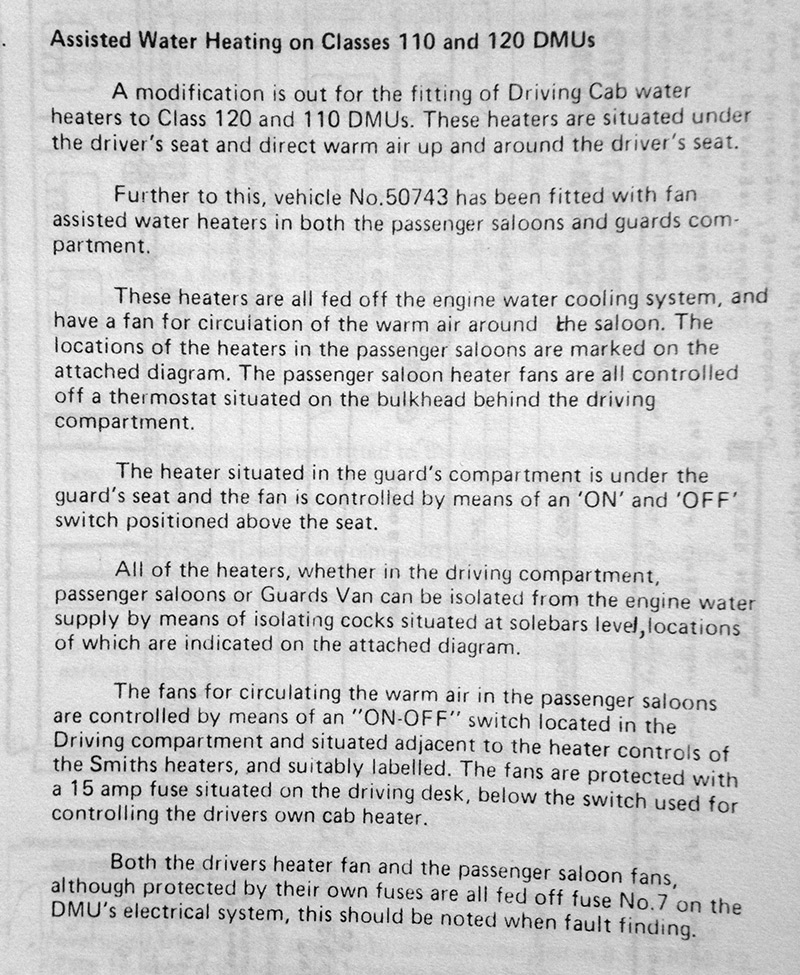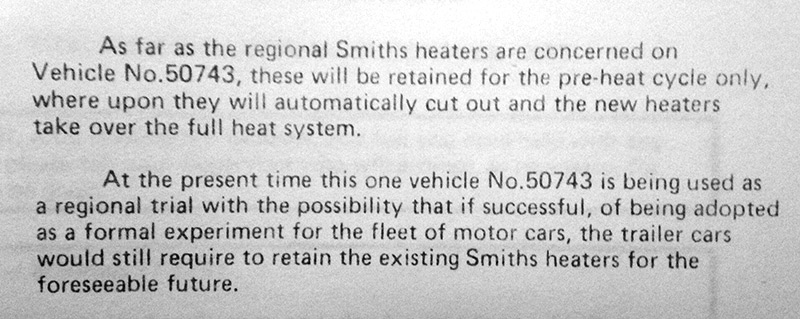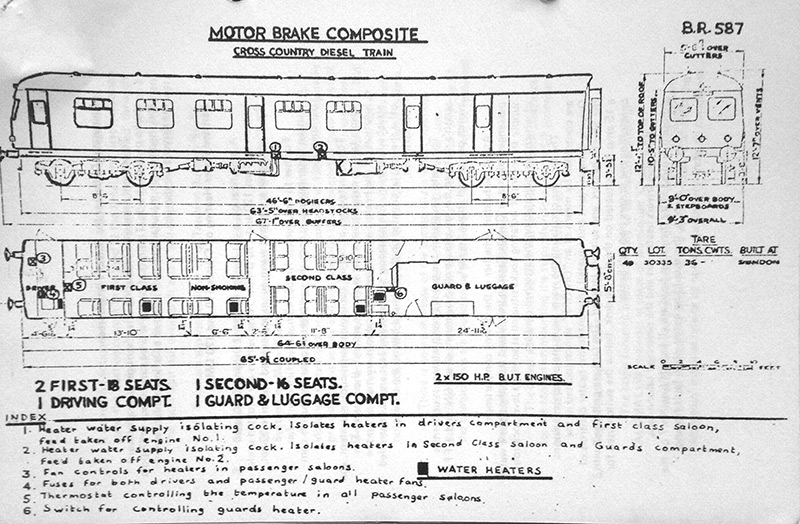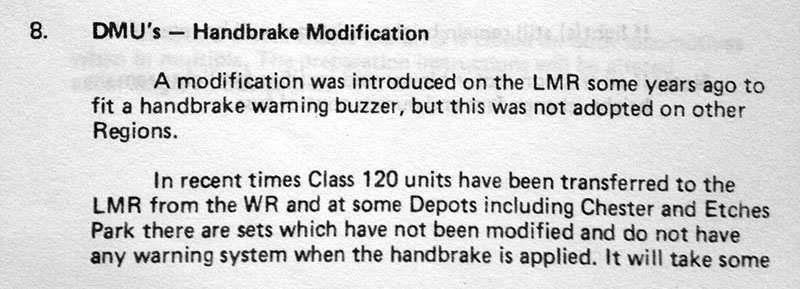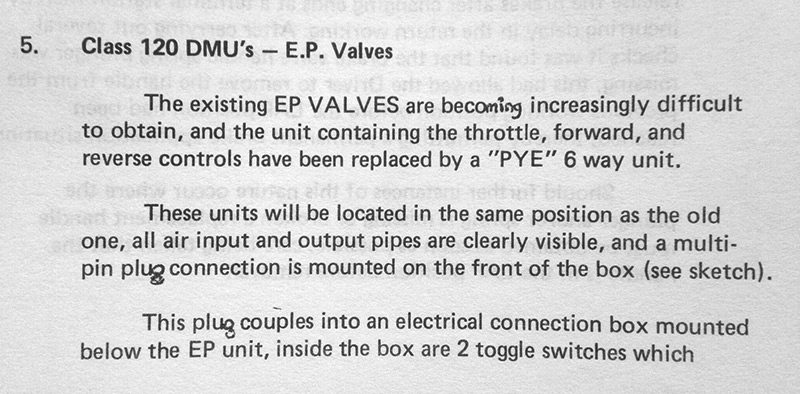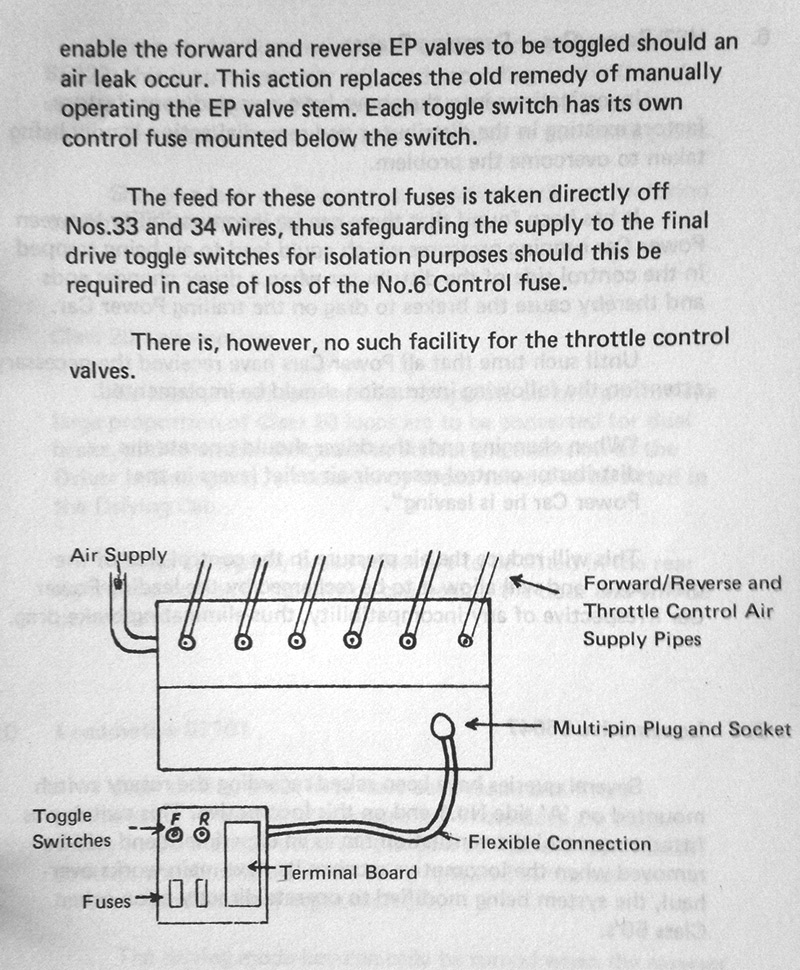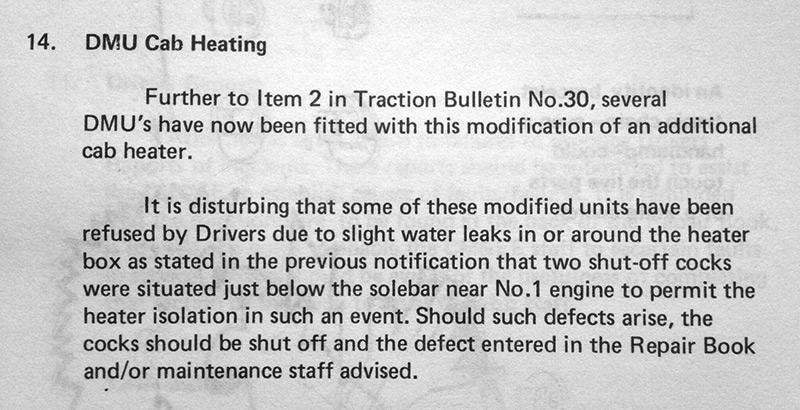Class 120 Swindon 3-car DMUs
Modifications
Headlamps
Beginning in 1967[1] Cardiff based vehicles designated to the Central Wales line would have a headlamp fitted between the cab windows for better visibility on the many ungated level crossings.
The following (taken from a 1974 LMR instruction book for staff working over the Western Region) describes the use of the lamps:
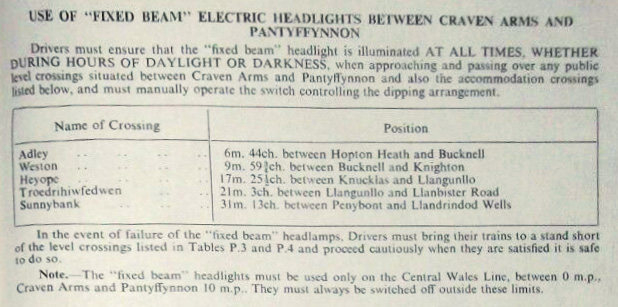
The single handrail between the cab windows was replaced by a mounting plate with a handrail on either side of a lamp mounting bracket. The front of this bracket had a grab handle on the lower side. The lamp itself sat on two flexible mounts (left and right) on the bracket. The power to the lamp varied in the location of where the wiring entered the vehicle (as in the images below), some had connections that appear to be niphan or similar sockets allowing the lamp to be switched / removed.
The lamps themselves appeared fairly consistent in style, only on one set (C616) did they appear different on both power cars with what appears to be an outer ring (reflector?) added. This is shown in the fifth image. The sixth image shows how much these headlamps protruded from the cab front.
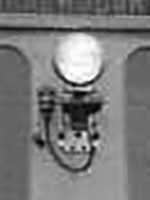
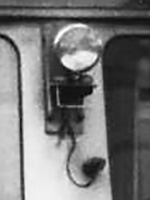
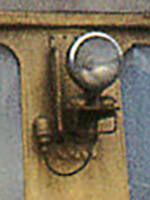
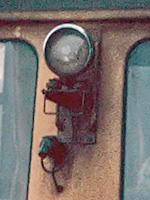
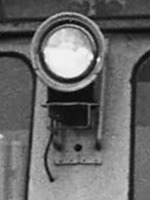
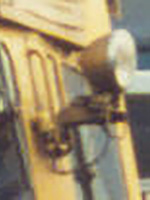
Mostly these would be applied to batch one vehicles, but in the early days two batch three sets had headlamps and Scottish Region batch two transfers to Cardiff (51781 + 51788) as set C615 would have them added.
Removal
When vehicles were transferred elsewhere, or when these were no longer required on the Central Wales line, sometimes (but not always) the headlamps would be removed leaving being various amounts of evidence that they were once carried.
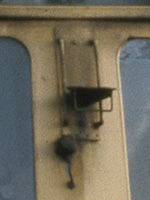
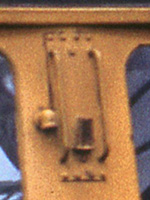
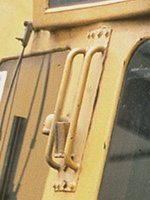
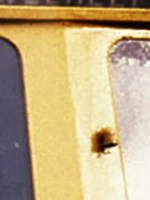
DMBF conversions (larger van areas)

Circa 1968 the ScR modified four of their DMBC cars (51783-6) by removing the second class saloon (two seating bays) to increase the luggage space. An extra set of double doors was added to the centre of the vehicle, at the position of what had been a 2nd class passenger window. The other 2nd class window on the drivers side was removed, but was left in place on the opposite side. They were reclassified as DMBFs.
The image shows converted 51783 with more van space than passenger accomodation.
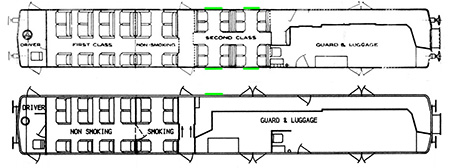
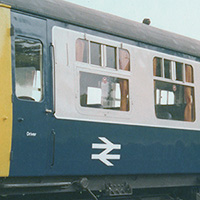
The plan shows the before and after, and in the centre saloon I've marked the windows in green: four before and just one after conversion.
Also in 1968 four DMS vehicles (51790-3) underwent an "ambulance mod" adding stretcher windows to the first passenger window on each side (shown in the image). How they looked inside can be seen in this image. Why this was done is a mystery. Were the four converted DMSs intended to be paired with the DMBFs? Did the conversion work to the DMBFs create a scenario where it was felt that stretcher windows were required? If anyone has information on this it would be appreciated.
After the vehicles moved away from Inverness the stretched windows would be removed, some leaving no trace, others (such as 51790) had differences from standard windows.
Wipers

In 1969 and 1970 both power cars (50679 + 50727) from a Bristol allocated set were noted with an addition to the cab front in the position that the wipers would park. Details are unknown, it may have been a way of heating the wipers in cold weather to stop them sticking to the glass?
Asbestos Removal
All vehicles were built with blue asbestos sprayed into the inside of the steel shell (walls, roof and floor) before the formica panels (and timber/lino floor) were added. By the 1970s the health danger this represented was realised and some types went through a removal process, often in combination with refurbishment which could involve the replacement of floors and wall/ceiling panels anyway.
It is commonly thought that this was tried on some Class 120 vehicles, but it was a more labour intensive effort (and thus more costly) than other types so few vehicles were treated. From my own experience dealing with the restoration of the similarly constructed Class 126 vehicles, they were much more difficult to work with compared to say a Class 101.
The pages below are from a vehicle log kept by the RTC at Derby which included asbestos details. It is dated circa 1984, and just eight vehicles are noted as being completely stripped: 53658, 53662, 53686, 53699, 53700, 53732, 53733 and 59282.
The codes for the asbestos columns are: B - blue asbestos; C - removed. The notes in the remarks column: CV - corridor van (presumably with cage); BA - buffet area; LR - luggage racks. The latter only applies to 59282 which was running in a 119 set and the g in the refurbihed column means 'refurbished for Reading - Gatwick service'.
Miscellaneous
Here are details of some of the many other modifications made to the class, detailed in LMR Traction Bulletins.
Issue 11 - July 1974
1.4. D.M.U. Trains. Smiths Combustion Heaters. Expt. DM.104.
Issue 30 - October 1980
2. Diesel Multiple Unit Cab Heating. Car No. M50696
Issue 31 - April 1981
Assisted Water Heating on Classes 110 and 120 DMUs
Issue 33 - February 1982
8. DMU's - Handbrake Modification
Issue 35 - December 1982
5. Class 120 DMU's - E.P. Valves
Issue 35 - December 1982
14. DMU Cab Heating
14. DMU Cab Heating
References
- ⋏ p515 September 1967 Modern Railways (Ian Allan)
Summary
Orders
Description
Modifications
Refurbishment
Diagrams & Design Codes
Works Photographs
Numbering & Driving Inst.
Liveries
Operations
Operations - Central Wales
Operations - LMR
Operations - Scotland 1958-81
Operations - Scotland 1986 on
Decline
Parcel Use
Images
Details about the preserved Class 120 vehicle can be found here.



